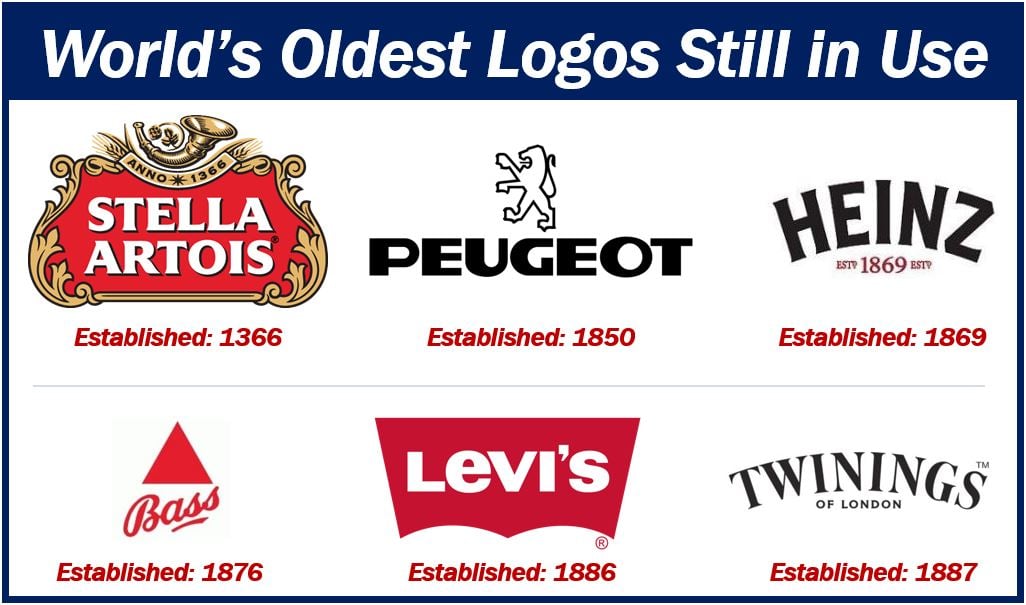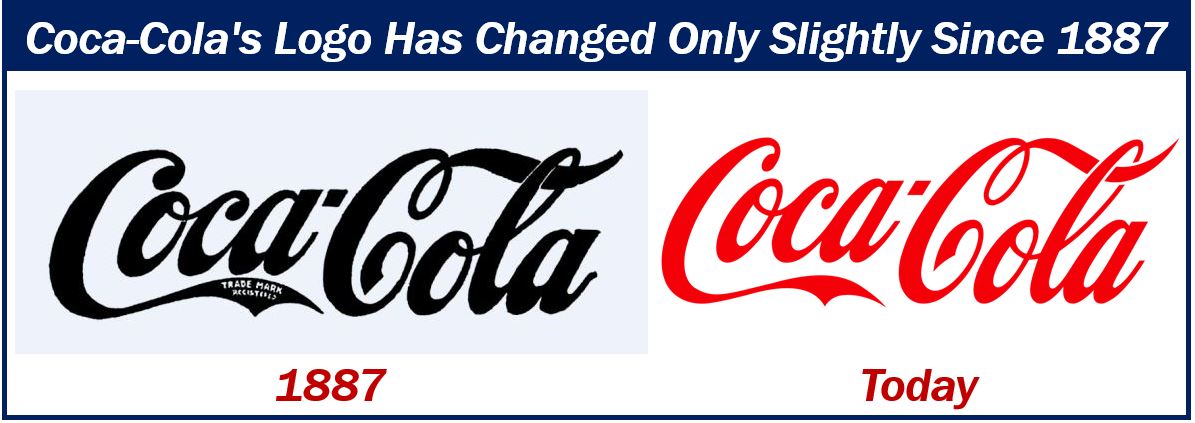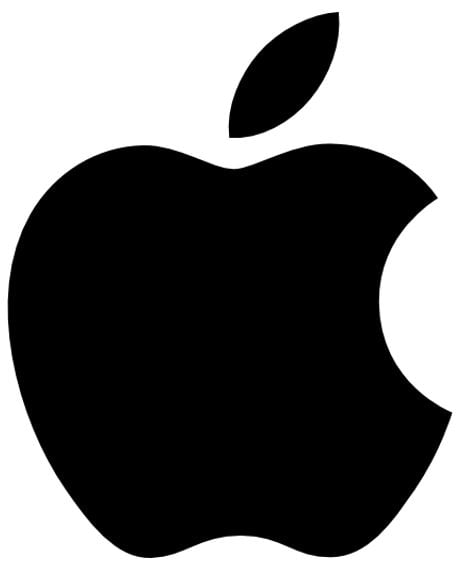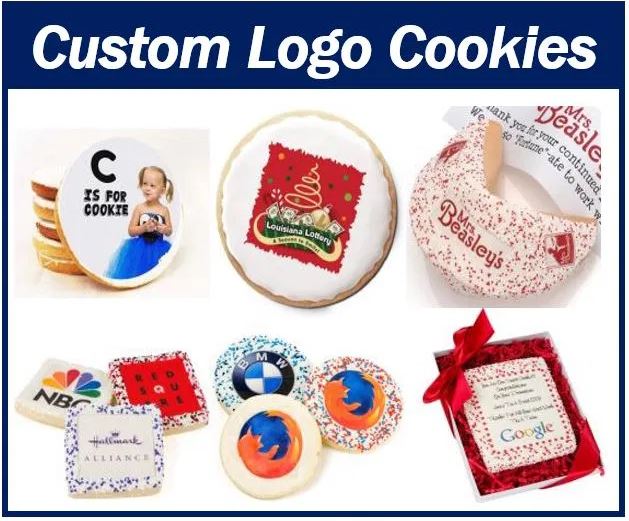A Logo is a drawing or image that companies, political parties, non-profit organizations, educational institutions, government agencies, sports teams, charities, religious institutions, social clubs, and people use to mark their identity, i.e., who they are. They may use them on their letterheads, adverts, and the products they sell.
A logo may consist of images or drawings of things, people, and abstract concepts. It may also include words or letters. When it consists entirely of words or one word, we call it a logotype or wordmark.
Strategically designed, a logo can evoke certain emotions or associations, subtly influencing consumer perception and behavior toward the brand.

The world’s most famous logos are typically simple designs with very few colors. Some of the best-known ones are in black and white.
Many schools, clubs, other non-commercial organizations, and even families have their own logo. The oldest form is probably the heraldic badge.
Your logo and your brand
Your logo is a major component of your brand. It helps customers, prospects, and other consumers understand who you are, what you stand for, what you value, and what you do. A prospect is a consumer who you think has a good chance of becoming a paying customer.
A brand is the personality and image of a company, its products, or services. A product’s or service’s features, such as slogans or logos, make it different and unique. A company logo makes the business or product stand out in a crowd of competitors.
Employees who focus on logos, slogans, and brands are involved in brand management. Good brand management can help boost brand loyalty, which keeps customers coming back for more.
If a company has a good logo and brand, it is easier for it to increase prices and raise profits.

Creating a logo
Before you start designing your logo, you need to find out as much as you can about your customers, prospects, and your sector. You should also check out your competitors’ designs and slogans.
The message you want to send out to the market depends in large part on what sector you operate in. For example, a university or financial institution wants people to perceive them as professional, reliable, honest, and competent.
Toy companies or nightclubs, on the other hand, want the market to see them as fun places. The last thing they want is for consumers to consider them as serious and conservative.
Your logo should also be unique. However, don’t make it so unique and bizarre that consumers are unable to work out what you stand for, i.e., they can’t understand your brand.

The three components of a logo
There are three possible components of a logo: 1. Imagery. 2. Typography. 3. Color. Let’s have a look at them:
Imagery
Some logos consist only of an image. Apple Inc., the California-based multinational technology company, has a black image of an apple with a piece bitten off. There are no words.
Some logos have abstract geometric shapes or decorative elements. Ideally, your image should either reflect your market sector or the name of your business. In Apple’s case, it reflects the company’s name.
Typography
Typography refers to the appearance and style of printed matter, i.e., letters, words, phrases sentences, etc. Your logo may include a single letter, word, or a whole phrase.
A slogan is a good example of the use of typography to enhance a brand. They are either included as part of a logo or added alongside it and periodically changed.
Some famous slogans include:
Nike’s ‘Just Do It,’
Apple’s ‘Think Different,’ and
McDonald’s ‘I’m Lovin’ It.’
Color
Your logo can be monochrome (one color), black and white, or multicolored. Apple, which has the world’s second most valuable brand, worth $309.5 billion, has a monochrome logo. Amazon’s is black and orange; its brand, the world’s most valuable, is worth $315.5 billion.
Is it a coincidence that the world’s most valuable brands tend to have very simple logos?
Most designers say that color plays a crucial role in making your logo meaningful and real. Many startups tend to choose any color. This could be a mistake. Colors trigger emotions, they convey messages to consumers regarding your brand.
In the digital era, logos are often designed to be adaptable across various platforms, ensuring brand consistency from print media to online presence.
Corporate events
 Corporate events are great playing grounds for effective marketing campaigns. Competent marketing professionals can think up dozens of strategies to promote their company and sell their ideas.
Corporate events are great playing grounds for effective marketing campaigns. Competent marketing professionals can think up dozens of strategies to promote their company and sell their ideas.
Custom cookies, for example, with your company’s logo on them, can help increase the number of people who can identify your company.
If you offer free customized cookie during an exposition, trade show, conference, or other corporate event, you will be surpised at how many people will take one. Most of us love cookies.
Every marketing professional’s aim is to get customers, prospects, and consumers to associate their brand with something pleasant. Nice tasting cookies with your logo on them can do just that.
When people attend a corporate event, most of them seek out the buffet or inspect waiters’ trays to see what goodies there are on offer.
Etymology
Etymology is the study of where words come from – their origins, plus how their meanings and forms evolved over time.
The English word “logo” is an abbreviation of logotype, which comes from the Greek words “logos” and “typos,” which mean “word” and “imprint,” respectively. In Greek, “logos” also means “speech, discourse, or reason.”
According to Etymonline.com, the term logo appeared in the English language with its modern meaning in 1937. It is probably a shortening of the word logogram, which means ‘a character or sign representing a word.’
